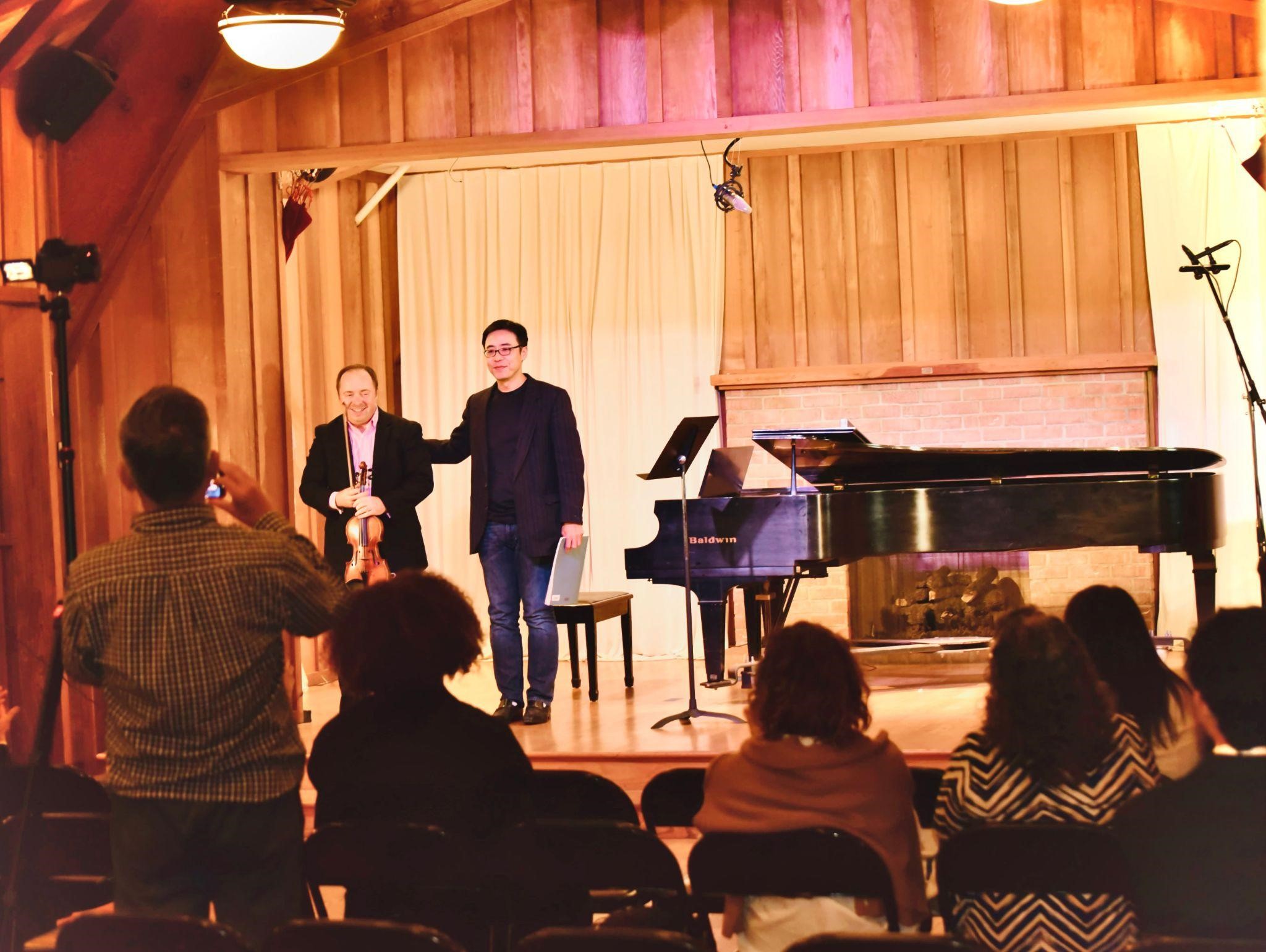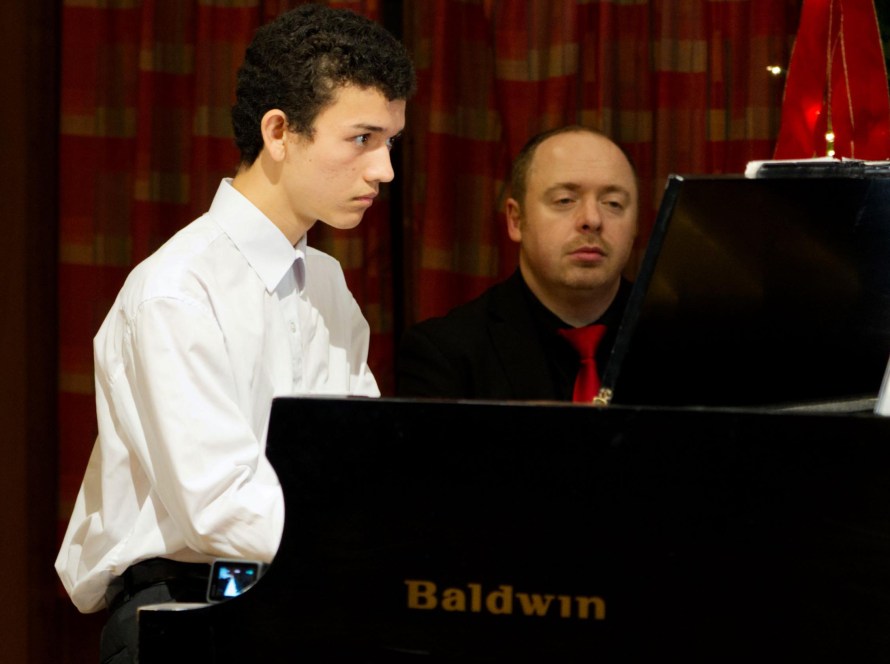Learning Piano as an Adult: Difficulty, Cost, and Time Investment

Piano allure persists despite adulthood. Discover realistic effort learning piano demands weighing difficulty, costs, and time needed to progress happily at your own pace. Play on.
Many adults eager to begin piano lessons get intimidated wondering if learning is too challenging once youth’s malleability fades. Yet the allure of playing beautiful music persists.
Undertaking a rewarding new creative life chapter simply takes realistic expectations around the effort required amidst adult responsibilities. With passion, piano skills integrate with consistency. This guide reviews concrete difficulty, costs, and time piano demands from adult newcomers along with sustaining the motivation to progress happily at your own pace.
| Learning Elements | Skills Developed | Mindsets for Progress |
|---|---|---|
| Dexterity, reading notation, finger independence, memorization | Physical coordination, music literacy, focus, retention | Set participation goals, celebrate milestones, get support |
Why Adults Delay Piano Pursuits
Myriad reasons contribute to adults delaying piano dreams from childhood. Beginning music instruction as an adult does assume some disadvantages relative to youngsters whose flexibility aids in quicker progress-building techniques. Preconceptions also hamper momentum, including beliefs that:
- Piano mastery remains confined to dedicated prodigies
- Learning capacity diminishes with age
- Years of lessons and practice missed can’t be offset
- Developing requisite hand dexterity feels improbable
- Embarrassment performing imperfectly discourages persistence
Yet with life’s responsibilities making free time precious, exploring artistic enrichment also heralds a commitment to lifelong growth. Imagining fulfillment needn’t perpetuate delay. Adjusting expectations coupled with passion conquers all challenges.
Physical Demands of Progress
Physically, piano playing utilizes the whole body executing coordinated finger motions fluidly together. New movements demand focused initial practice before complex repertoire flows freely. Adults must patiently ingrain proper form.
Finger Independence and Dexterity
Intricate hand motions require strength and independence:
- Playing scales adroitly needs each finger lifting without touching other keys
- Wide spacing between bassline and melodies stretches muscles differently than daily motions
- Fingering patterns assimilate gradually through muscle memory
Daily dexterity exercises build essential flexibility all students need. Don’t get frustrated if children’s supple hands master some stretches quickly. Consistency matters most.
Hand and Arm Movement
Moving hands across the piano requires fluid mobility:
- Smooth lateral arm movement for playing extreme low and high
- Rolling over the thumb underneath the palms to switch positions
- Keeping wrists and elbows loose for free expression
- No tension in shoulders or grimacing on the face which strains posture
Proper relaxed ergonomics prevent injury enabling longevity pursuing piano over decades. Incorporate full-body warm-ups and gentle stretches before and after practicing.
Coordination
Independence training each hand alone builds control:
- The left hand provides a rhythmic framework and harmonic support
- Right hand delivers lyrical melodies and ornamentation
- Contrapuntal works interweave multiple independent voices
Syncing different parts challenges both hands’ agility cooperating. Isolate trouble spots slowly. As skills fuse intuitively, complexity feels natural.
Cognitive Load
Interpreting written notation adds further mental load deciphering abstract symbols and connecting sound to keys producing them accurately. Consistent study assimilates reading into automatic reactions.
Note Reading and Rhythm
Sheet music combines:
- Pitch represented vertically on grand staff treble and bass clefs
- Note lengths conveying rhythmic durations dictated by time signatures
- Key and accidental signs sharpening/flattening notes from score key
- Musical articulation like accents modifying performed expression
Regular sight reading practice links notation patterns to finger placements.
Music Theory
Some fundamentals include:
- Note names within staff lines and spaces
- Scales outlining musical keys with accidentals
- Intervals between note distances help structure chords
- Circle of fifths displaying key relationships
Internalizing vocabulary and constructs demystifying concepts into tangible sound. Celebrate grasping ideas, not judging the current lack thereof. Knowledge builds steadily.
Memory
Performing does rely on accurate recollection including:
- Remembering extended sections enables focus on expressiveness, less decoding
- Forgetting mid-piece loses continuity but just resume Dy rediscovering place
- Mental play between sessions reinforces retention so hands execute familiar patterns easily upon returning
Be patient memorizing longer passages. Take incremental baby steps.
Time Commitment

Carving out piano time amidst adult schedules challenges consistency. But regular practice yields exponential skill returns. Set realistic aims given your broader obligations and rest requirements.
Frequency
Daily repetition ingrains motor pathways nurturing advancement. 30 focused minutes daily outweighs infrequent detached hours. Consistency stabilizes progress more than forcing marathon efforts occasionally. Regularity shows commitment.
Years Required
In expecting overnight success, recognize childhood students invest years approaching mastery. But adult diligence matched with customized goals expedites growth appropriately. Frame milestones reached around personal progress rather than peer comparison.
Perspective
See piano sanctuary, not a burden; an active lifestyle component blessing wellness rather than another responsibility causing stress. Reflect on the enriching benefits of learning piano, like mind-body connections through memorizing new patterns.
What playing becomes emerges from the mindset you choose. The journey deserves appreciation regardless of the elusive destination.
Financial Investment
Budgeting for piano expenses smartly avoids financial stress. Calculate costs accurately and recognize monetary investments fuel creative empowerment shaping identity positively for years ahead.
Piano or Keyboard
Digital keyboard options minimize initial outlay but developing proper touch control at weighted keys enables acoustic piano transition later. Consider:
- Keyboard: Under $500 easily, portable. Suits casual hobbyists lacking space. Less realistic action can engrain bad habits.
- Upright Piano: $2000-$5000 used. Genuine tone and full range. Must tune/maintain periodically. Requires dedicated space. I am moving challenging. Select carefully assessing condition given age.
- Grand Piano: Over $5000 used for small sizes. It has a big sound but is even pricier and less easily transportable than uprights. Mostly professional territory but prestigiously pleasurable.
Lessons
1-hour sessions range from $70-$100 with rates based on teacher expertise and metro area cost-of-living. Weigh taking regular lessons initially. Corrective feedback prevents poor form cementing. Later transition self-paced after establishing solid fundamentals worked in earnest.
Method Books and Sheet Music
Budget $15 per book for beginner instructional materials and timeless songbooks. Transcribing music notation by hand trains listening skills too. Wanting ownership of dream pieces incentivizes putting notes accurately on paper. Streaming subscriptions affordably grant song access digitally instead of for variety.
Pursuing passions enriches life’s meaning beyond money. Reflect on lifelong advantages piano practice offers.
Embracing the Challenge
More than difficulty itself, completing ambitions depends on the mindset of embracing the reality required while persevering through uncertainty, frustration, comparisons, and perceived limitations from age. Reframing thoughts constructs the mental piano sanctuary serving creativity apart from daily turbulence.
Set Participation Goals, Not Product Goals
Measure achievement simply through showing up to play weighed only against your past commitment, not peers or ideals. Setting process goals around consistency reduces anxiety hindering natural advancement paths from starting points.
Milestones Over Mastery
Celebrate incremental learning milestones by reading new notes, conquering finger dexterity challenges, memorizing initial melodies, etc. Forget imagined finish lines. Reward small tangible gains showing progress.
Schedule Realistically
Balance scheduled practice with rest and other priorities like work, family, and health. Try practicing before duty calls when energy peaks, not attempting late tired hours. Even brief sessions stimulate the play state where absorption unlocks flows.
Cultivate Support
Share your musical journey with others who nurture personal growth efforts. Their listening ears and cheers provide needed perspective on persevering through difficulty. Community builds courage.
Conclusion

Yes, adulthood brings evolved responsibilities arguably limiting rapid mastery of musical pursuits like piano. But rather than resigning yourself from artistic fulfillment by believing untruths that capacity diminishes with age or time has passed, remember brain plasticity and neuron development continue reacting to new stimulation introduced through learning piano. What now matters remains committing consistency outweighing comparing achievement levels against others.
Within the lesson continually revealing itself dwells the essence of piano magic – breaking free by releasing judgment and expectations to immerse curiosity in the feel of progressing forward steadily today.
Tapping even shaky beginner steps sets you on the rhythmic path where increased confidence awaits through celebrating small milestones accumulated transforming novice uncertainty into capability. Embrace the challenge on the horizon as an invitation welcoming grander creative possibilities than imagined. The immediacy of now offers all you require to play on.
Frequently Asked Questions
Why do adults delay learning piano?
Beliefs exist that mastery requires childhood prodigy status, capacity declines with age, and missed opportunity windows cannot get offset as an adult.
What physical elements pose piano learning challenges?
Finger dexterity, hand coordination, stretching skills between bass and treble, moving fluidly across the keyboard.
How does reading sheet music increase cognitive load?
Interpreting notation symbols for pitch, rhythm, and articulation must be translated into precise key placements.
Why is daily consistent practice important?
Frequent repetition ingrains neural pathways and muscle memory better than sporadic longer sessions.
What are piano cost considerations for adults?
Invest in a quality weighted key digital keyboard or acoustic piano. Take initial lessons. Budget method books.
How can adults balance practice with responsibilities?
Schedule realistically when energy is highest. Even brief focused sessions build skills incrementally.
Why spotlight milestones more than mastery?
Tangible gains keep motivation high. Progress unfolds steadily when emphasizing consistency over perfection.


